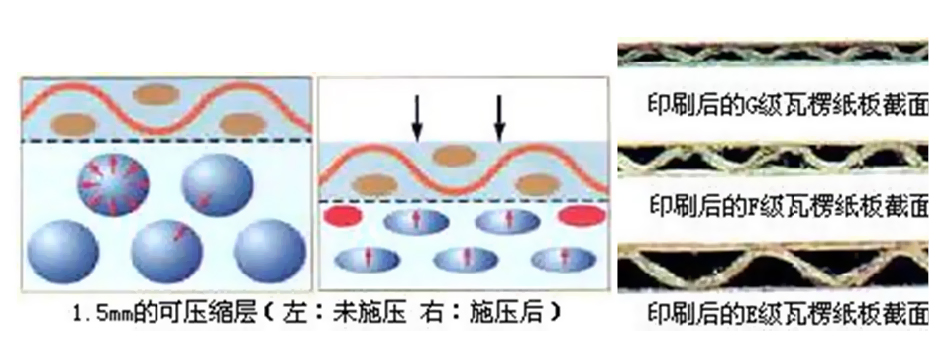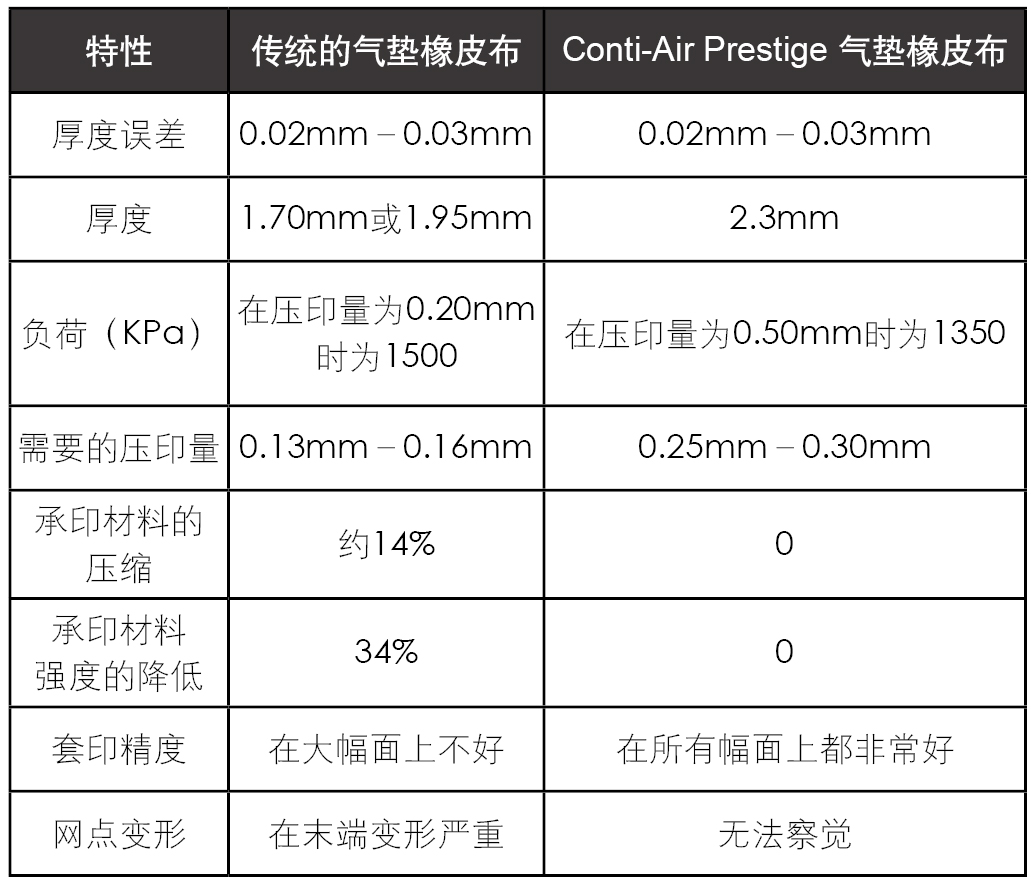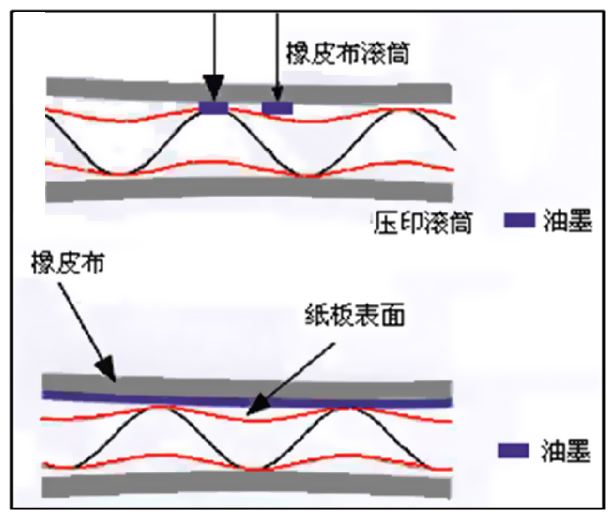Bronze winner:
Li Fei was born in 1981, Shandong. A graduate student from Jiangnan University, a lecturer at Qufu Normal University, and a deputy director of the Department of Packaging Engineering. Mainly engaged in printing, packaging process teaching and research. After graduating from university, he worked in a printing company for two years of technical work, and then spent half a year in China Business Beijing Hualian Printing Co., Ltd. He successively published more than 60 Chinese and English papers and articles in various types of printing and packaging publications, participated in the compilation and publication of 4 professional books, participated in a number of corporate project studies, and provided technical support and consulting for printing and packaging companies.
With the continuous development of printing technology, various new technologies and new processes have been applied to the corrugated box industry. The development and application of a new type of fine corrugated packaging box also promoted the offset printing process, making the direct offset printing technology of micro-corrugated cardboard increasingly mature. The increasing competition in the carton industry and the impact of the financial crisis have forced companies to open up new businesses to increase profits. Corrugated board direct offset printing equipment has the ability to flexibly change orders, printing paper and cardboard, and many other products, will undoubtedly bring new business opportunities for paper printing companies and carton printing companies.
Advantages of offset printing board
At present, the printing of corrugated cartons in China mainly includes offset printing, flexo printing, flexo printing or gravure printing. Each method has its own advantages and disadvantages.
Offset printing is the most widely used printing method today, with mature technology, simple plate making process, low cost and high speed. Offset corrugated cartons are divided into indirect and direct printing. The indirect printing method is to print corrugated cardboard paper first, and then use a single machine to reconstruct corrugated cardboard. In the printing of high-grade corrugated cardboard boxes, the offset printing method cannot be replaced. From the point of view of the processing technology of paperboard, the process of the first time after offset printing, due to pressure and excessive water left in the colloid, will affect the technical indicators such as the flat pressing strength and the bonding strength of the carton.
Offset products can be screened with up to 200 lines/inch, exquisite designs, and stable quality. They can also be used for surface finishing processes such as laminating and glazing. They account for a considerable proportion of high-end packaging carton printing. Although the offset printing technology is relatively mature and the printing speed is fast, this method is not suitable for the cardboard linkage production line. As the fountain solution is used during the offset printing process, the moisture content of the base paper will be increased, and improper overprinting will also lead to failure of overprinting. In addition, the pressure of offset printing, the limited printing format and other factors, there are limitations in the production of low-grade transport packaging cartons. In addition, offset printing is not yet relatively environmentally friendly ink use is also affecting its use and promotion of another obstacle.
The development and use of miniature corrugated products is the development trend of the carton industry in the future. Microwatts have the advantages of low weight, high strength, and high surface smoothness. Offset printing is the best way to print. The direct offset printing process of corrugated cartons has been relatively mature abroad. The corrugated board can be directly placed on a special offset press for printing. The process can not only ensure the formability of the carton, but also can complete the exquisite glossy paper printing, but the requirements for the printing machine are higher.
Micro-Welding Technology Requirements
The successful development of a new type of micro-corrugated cardboard has created conditions for the direct offset printing of corrugated cardboard. However, the printing of corrugated cardboard has a big difference compared with ordinary printed sheets. Its structural characteristics determine the technical requirements for direct offset printing. Corrugated board printing is performed on uneven surfaces formed by corrugations and wave troughs. The pressure during the printing process must be higher than the pressure required for the surface smoothing material, and the corrugated paperboard grooves and ridges must not be damaged. For such difficult requirements, it is impossible to achieve simple operation control of ordinary printing presses. High-quality offset printing directly on corrugated cardboard has higher requirements for printing equipment, blankets, and inks.
Printing Equipment
For offset printing equipment, it must have high technical capabilities. The continuous development of the structure of the printing press provides the necessary conditions for the direct offset printing of corrugated board. Now offset printing equipment suppliers have noticed the development of offset printing in packaging printing, and have developed different types of printing equipment exclusively for packaging printing. The design of the paper feeder and the paper feeding device should allow for the replacement of printing materials, including the replacement of very thin paper materials with extremely thick corrugated materials. In order to improve efficiency, the replacement operation is preferably performed automatically, and most of the setting adjustments can be done remotely through the center console.
There are many existing micro-tile offset models, such as the Kapok Rapida 105, Rapida 185, 205 and other models, Roland 500,700, Heidelberg CD74, CD102, Mitsubishi's DIAMOND3000LC, domestic Beiren 800 and other equipment can be different thickness The micro-wavy board is printed directly.
For example, the Kapok Rapida 105 model that was printed on corrugated cardboard earlier was better designed in the paper feeding unit. The Rapida 105's standard feed pile has an existing height of 1.3m and a large-format pile height of 1.5m. For companies that use cardboard or corrugated material, they can also raise the press by a further 37cm or 60cm to a height of 1.8m. Large format models even exceed 2m. The automatic non-stop device ensures the continuity of production, and can be used in combination with an automatic stack supply system to fully realize its full potential.
Among the three double-sheet control devices, the ultrasonic double-sheet controller is applicable to all printing materials and can be used for the printing of paper, cardboard, and plastic materials. The capacitive double sheet controller is the first choice for thicker substrates such as multi-layer cardboard. Optical double sheet detection system, suitable for various substrates including paper to corrugated board. Just change the web setting from the console menu screen to start the most suitable double-sheet control system for the current print material.
The paper feeding device is suitable for various occasions, so that the device does not require manual adjustment of the side gauge and the front gauge even when the printer performs the most significant change of the printing material. The smoothly accelerating hem delivery mechanism ensures that the paper is reliably delivered to the press without any scratches. Others, such as the new shaftless Feida, belt conveyor with belt deceleration, provide the possibility and convenience for the printing and transportation of corrugated board.
Printing blanket
Offset transfer of ink through the blanket to achieve ink adhesion. Corrugated board requires no loss of strength after printing, which requires that the blanket for direct offset printing must be suitable for the particularity of corrugated board material.
The sharp increase in pressure during printing needs to be relieved by the good pressure-bearing properties of the blanket so that the deformation of the micro-corrugated cardboard can be minimized and the graphic reduction effect is good. This imposes higher requirements on its elasticity and hardness. The flexibility and versatility of offset presses also require the versatility of the blankets. The replacement of jobs is not required with any special cardboard printing device. The surface of the cardboard is uneven, and the phenomenon of “squeezing the board†occurs during printing. The application of the new type of blanket must eliminate this problem, and it is necessary to obtain good results on grade G and heavier grade F and E grade corrugated cardboard. Offset quality. The specific requirements for it are as follows:
Hardness: The hardness of the blanket directly affects the integrity of the printed dot transfer. High hardness, easy to wear plate, but the transfer of clear dots; low hardness, easily deformed mesh.
Compression deformation: In the high-speed printing process, the blanket will be periodically compressed and deformed, resulting in compression fatigue, which will cause permanent deformation for a long time, reduce the thickness of the blanket, reduce the elasticity, and increase the hardness.
Good ink transfer performance: The blanket as the intermediate carrier for dot transmission must have good ink adsorption capacity, ink transfer performance, and strong water repellent performance.
Oil and solvent resistance on the surface: The surface layer of the blanket must have good oil and solvent resistance, prevent swelling due to contact with chemicals during printing, and cause dot distortion.
Elongation is appropriate: the fabric of the bottom cloth of the blanket is required to be fine and uniform, smooth and firm, and the expansion and contraction rate is small, and the inner adhesive layer overlaps and has good adhesive performance, and is not easily split, and the vertical and horizontal directions are absolutely vertical. In order to avoid the blanket being easily stretched in the printing process, the adhesive layer will be thinned and the elasticity will be reduced, which will cause the dots to be expanded and deformed and the overprinting will be inaccurate. After several trials, a special air-cushion blanket can be used that satisfies the correct transfer of corrugated board offset printing dots.
The new blanket adopts a super-compressed sponge layer. The good elasticity can compensate for the difference in printing pressure between the peaks and troughs of the corrugated cardboard during direct offset printing and improve the printing effect. When converting from cardboard printing to paper printing, no adjustment is required to adapt to the needs of printing materials.
Such as the new Conti-Air Prestige blanket, can be applied to the surface structure of all types of printing materials used in the current packaging offset. The following figure shows the cross-section and compression diagram of the product.


The superficial compound on the surface is relatively soft (Shore A hardness 55°), the compression capacity of the compressible layer can reach 20%, the compression amount is 1.55mm, and the thickness of the compression layer is three times that of the traditional blanket. With good pressure capacity, it can relieve the pressure of sharp increase. In addition, it can be used with mineral oil based inks, UV inks, and hybrid inks. Compared with the traditional blanket, its performance is shown in the following table.

Comparing the performance of the new Conti-Air Prestige air-cushion blanket with traditional blankets
This kind of compressibility can adapt to the condition of the printing surface of corrugated board, and it can get even and smooth embossing on the whole surface, and the compressive force generated on the surface of the printing material is minimal, and the corrugation strength is hardly affected. Even if it is overprinted on cardboard, good results can be obtained. It can also be applied to paper printing. The following illustration shows the excellent properties of the microwale cross section after printing.
Quality tests conducted on the Rapida 142 press demonstrated that the Conti-Air Prestige can achieve good overprint accuracy even on large format corrugated paper. The ink delivery is better, the stacking ink is reduced, the outlets are clear, and the printing quality of the large area is also better. During the imprinting process, the pressure is lower, the printed sheets can be sent neatly, and the delivery pile remains flat.
Printing ink
As the surface of the mini-corrugated cardboard has a 楞-shape, the colored surface is uneven. Therefore, in the printing, if the ink is mis-selected, it will cause the ink dot above the peak of the corrugation to be completely reduced, and the dot in the valley will only be in contact with the surface part of the printing material. Therefore, in addition to the high tinting strength and abrasion resistance of the ink, if light and dark spots are to be avoided, it must be ensured that the ink is completely transferred even in incomplete contact.
The development of new inks has improved the printing quality of corrugated board direct offset printing. A good elastic blanket can reduce the pressure difference between corrugations and troughs of corrugated cardboard, but it cannot completely eliminate the pressure difference. The existence of this printing pressure difference affects the dot enlargement of the ridges and the recesses and the effect of the ink overprint to a certain extent, and forms the “cooking board†effect in corrugated paper printing. In order to eliminate the phenomenon of washboards, there are two requirements for offset printing inks for corrugated board:
In spite of the pressure changes, the ink must be uniformly transferred in the dot and field printing. The figure below illustrates the problems with ink transfer and can be seen in the nature of the ink. In this enlarged illustration, it can be seen how the dots on the blanket touch the corrugated paper. The ink dot above the peak of the corrugated medium is completely transferred, and the dots in the valley will only be in contact with the surface portion of the printing material. Therefore, if light and dark spots are to be avoided, it must be ensured that the ink can be completely transferred even in places that are not completely in contact. The more elastic ink can better meet this requirement:
In the printing field, the uniformity of the ink transfer must be ensured, and the ink must also be spread evenly after the transfer, that is, it has good fluidity, and excessive elasticity is not conducive to this process.
Therefore, inks suitable for corrugated board printing must find the best balance between fluidity and viscoelasticity in order to meet the requirements of these two aspects of ink. In production, the best formula can be determined based on the actual printing test. There are also special inks on the market, such as the Well-Perfect-EV10l0-w ink developed by the German GS Ink Factory, which is specially used for direct offset printing of corrugated paper.

In current packaging and printing plants, all production processes must have process stability, cost-effectiveness, and repeatability, while offset printing has greater advantages.
Fierce competition and financial crisis have brought challenges to packaging companies. With the advancement of new technologies, the development of offset printing equipment has provided material conditions for direct offset printing of corrugated paperboard, and also provided opportunities for offset printing companies and carton enterprises to open up new business.
With the continuous application of micro-tiles and the continuous improvement of printing quality requirements, it will inevitably provide huge business opportunities for the direct offset printing market for corrugated board. However, as a printing method, offset printing has its own characteristics. In production, attention should also be paid to ink and ink balance, adjustment of printing pressure, and adjustment of multi-color registration. Only high standards and strict requirements for production and management can produce high quality printed products.
Leather Gaming Chair,Leather Office Gaming Chair,Leather Swivel Gaming Chair,Comfortable Leather Gaming Chair
Taihe Fangyuan Muye Co.,Ltd , https://www.fangyuanfurniture.com